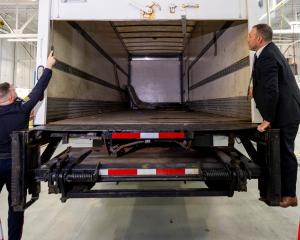NASA has unveiled plans for a mammoth deep-space rocket to carry astronauts to the moon, Mars and other destinations beyond the International Space Station, officials say.
The rocket project would cost $US10 billion through 2017, when the first test flight of the Space Launch System is scheduled to take place from the Kennedy Space Center in Florida.
Another $6 billion is allotted to building the Orion deep-space crew capsule, a holdover from the defunct Constellation moon exploration initiative canceled by the Obama administration. NASA already has spent $5 billion on Orion.
In addition, $2 billion would be spent to refurbish NASA's Florida spaceport to accommodate the new rocket.
The new rocket is based on the space shuttle's liquid hydrogen and liquid oxygen engines and fuel tanks, coupled initially with upgraded solid-fuel shuttle booster rockets that also were developed under Constellation.
NASA plans a competition that could replace the Alliant Techsystems Inc booster rockets with liquid-fuel rockets.
The announcement follows a year-long tussle with Congress over the project's cost, scope and technical parameters. The Obama administration withheld its plans while it obtained an independent cost estimate for the Space Launch System.
"We have been frustrated by the time delays," said Senator Kay Bailey Hutchison, a Texas Republican who serves on a NASA oversight committee.
"The numbers are within the authorization levels, we are now moving forward as a team for America."
"Sometimes the making of the sausage isn't pretty, but we are at the right end, we hope," she added.
Compared with the now-retired space shuttle, which could carry about 22,500kg to an orbit about 480km from Earth, the new booster is intended to lift as much as 63,000kg of cargo.
Future versions would have nearly twice the lift capacity for missions into deep space.
Obama has called for a human expedition to an asteroid by 2025 and a journey to Mars in the 2030s.












